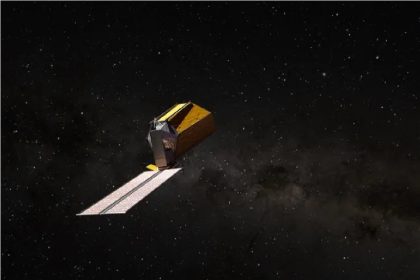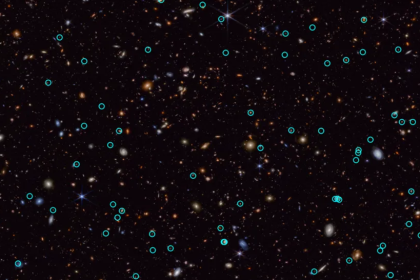Isna/Isfahan The astronomy expert said: Solar storms occur due to intense magnetic activities of the sun and include energetic charged particles that collide with the earth’s magnetic field. This phenomenon can cause disturbances in the orbit of satellites, telecommunication networks and GPS systems and even cause problems in high voltage power grids.
Solar storms are the result of intense magnetic activity on the Sun’s surface, during which charged particles move towards Earth at high speeds. When these particles collide with the Earth’s magnetic field, they can have negative effects on radio communications, GPS, and the performance of satellites, and even disrupt electrical infrastructure. However, the Earth’s magnetic field is the main barrier to prevent the harmful effects of these particles. In the polar regions, these particles penetrate into the atmosphere and by hitting the gases in it, they create the spectacular aurora borealis, which shows the interaction of nature and technology.
Hence with Alireza Bayat, astronomy expert We had a conversation to learn more about solar storms and their impact on satellites and telecommunication networks and the creation of auroras.
How are solar storms formed and what factors strengthen or weaken these storms?
Solar storms are formed by magnetic activity on the surface of the Sun. These activities create streams of energetic charged particles and intense radiations that are emitted into space. When the speed of these solar winds increases, the intensity of the geomagnetic storm also increases. Normally, the solar wind travels at a speed of 1.4 million kilometers per hour, but strong storms can increase this speed by up to five times. This increases the impact of charged particles with the earth’s magnetic field and creates more intense geomagnetic storms.
How do the charged particles of the solar wind get trapped in the Earth’s magnetic field and how do they contribute to the aurora borealis?
When the charged particles of the solar wind hit the Earth’s magnetic field, the magnetic field acts as a shield and traps these particles. These particles can penetrate into the upper layers of the atmosphere only from the polar regions. When these charged particles collide with the earth’s atmosphere, their energy is released in the form of beautiful and colorful lights, which are known as auroras. These auroras are mostly seen in the polar regions of the earth and display an extraordinary sight of blue, green, red and purple lights.
What is the effect of solar storms on the orbit and performance of satellites, and why do they cause disturbances in orbits close to the earth?
Solar storms can cause severe disruptions in the performance of satellites in near-Earth orbits. When the energy of these storms is absorbed by the Earth’s atmosphere, the atmosphere warms and expands. This expansion of the thermosphere layer increases its density and increases the drag force on the satellites. This extra force puts pressure on the satellites and throws them off course. Because of this, satellites may fail or be forced back into the Earth’s atmosphere, as happened to some of the Starlink satellites.
How can solar winds increase the rate of erosion of protective materials of satellites and damage electronic components?
Due to the presence of charged particles with high energy, solar winds can damage the protective materials of satellites and cause their faster erosion. These particles, while passing through the protective layers, penetrate into the electronic components inside the satellite and cause errors in their operation. This erosion and vulnerability over time can cause satellites to fail.
How effective is the Earth’s magnetic field in dealing with the effects of solar storms and why are some places more affected?
The Earth’s magnetic field acts as a natural shield against solar storms and prevents charged particles from penetrating to the Earth’s surface. This field is stronger near the equator and does not allow particles to penetrate into the lower layers of the atmosphere. However, in the polar regions where the magnetic lines enter and exit vertically, the penetration of these particles is more possible. Therefore, polar regions are most affected by solar storms and witness phenomena such as auroras.
What kind of disruptions occur in telecommunication networks and the Internet due to solar activity and how long can these disruptions last?
Solar storms can disrupt telecommunication networks and the Internet. These disruptions occur due to storm effects on radio waves that satellites use to communicate with Earth. Severe storms can cause signals to be garbled, resulting in erroneous data being sent to Earth. These disruptions can last from a few hours to a few days and vary depending on the intensity of the storm and the condition of the communication equipment.
What is the impact of solar storms on GPS and navigation systems, and what are the implications for ground users?
GPS systems are severely affected by solar storms. Charged particles and radiation from these storms can disrupt GPS signals and result in positioning errors.
These disruptions are especially challenging for air and sea transports that depend on GPS and may have difficulty determining the route and position.
What is the role of solar activity monitoring satellites and how can they help predict solar storms?
Surveillance satellites such as ACE and DSCOVR, developed by NASA and the Space Weather Forecast Center, play an important role in predicting solar storms. By observing the sun’s corona and its magnetic activities, these satellites can warn the earth about an hour before the storm arrives. These alerts help organizations shut down their equipment and temporarily shut down compromised networks.
Can changes in solar activity contribute to the warming or cooling of the Earth’s atmosphere and how does it affect our planet’s climate in general?
Changes in solar activity, especially in the long term, can affect the Earth’s atmosphere and climate. Severe solar storms can cause warming of the earth’s atmospheric layers and thus affect climate change. With the increase of solar radiation, the possibility of polar ice melting also increases, which affects the rise of sea water level and climate change.
Why do solar storms enhance auroras, and how does this process occur through interactions between solar charged particles and the Earth’s magnetic field?
Solar storms cause auroras due to the collision of charged particles with the Earth’s magnetic field. These particles can enter the atmosphere only from the magnetic poles, where they collide with atmospheric molecules, which causes the release of energy in the form of colorful lights. Hence, auroras are observed in the polar regions of the earth. During more severe storms, these auroras may also be visible at lower latitudes, presenting beautiful sights to residents of those regions.
Correspondent: Maryam Turkzad
end of message
RCO NEWS

















